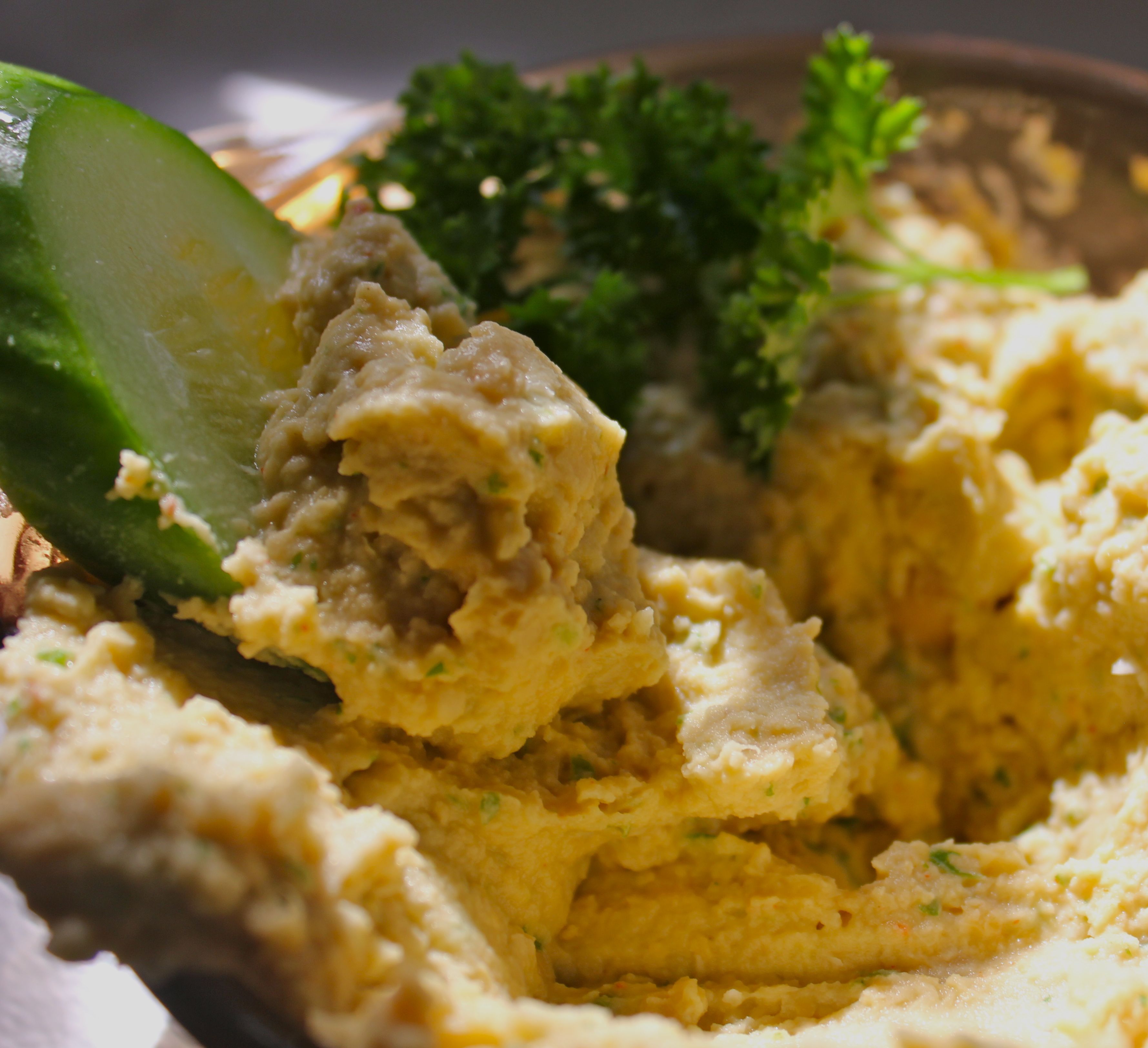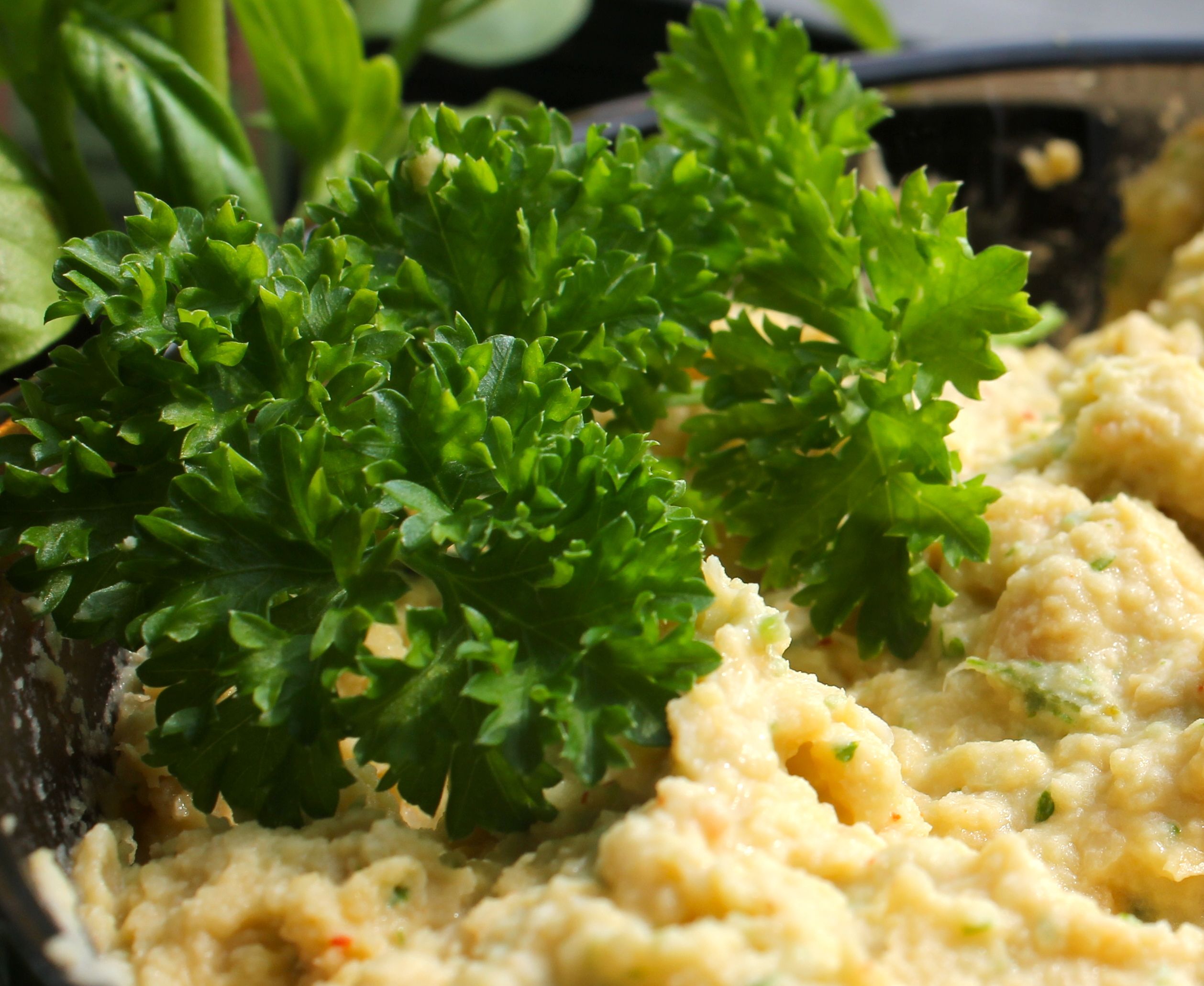Hummus has long had its name as a delicious “health food” snack. With its fresh flavor, protein content, and versatility it is an impressive and popular dip now easily found in conventional grocery stores. But contrary to its great reputation, wholesome appearing labels, and tantalizing “gluten-free” claims, many of the hummus products on the market are owned by large industries, mass-processed without care at destructively high temperatures, and laced with an impressive list of not-so-friendly ingredients. This week learn how to properly prepare chickpeas to make a delicious homemade hummus using flax oil, nutritional yeast, and fresh herbs.

The Hummus Among Us
As a devoted hummus-lover and veggie-dipper, I spent the other day strolling around the grocery store aisles with basket, notebook, and reusable bags in hand on a mission to check out the quality of store-bought hummus. I felt somewhat like an undercover, label-reading spy as I dug through the densely packed shelves to read the tiny font of countless ingredients listings. Shivering in the chill of the refrigerated section, I was shocked to find that every product had some kind of additive: soybean and/or canola oil, potassium sorbate, sodium benzoate, modified corn starch, citric acid, “natural flavors,” phosphoric acid and/or high fructose corn syrup. And so the sad truth settles in: like most things store-bought, processed hummus is not a health food.
The Scoop on Preparing Legumes
Hummus, as enjoyed in many Mediterranean and Middle Eastern cultures, is classically made with a base of chickpeas (or garbanzo beans), though some alternatives such as white beans and red lentils are now seen more commonly. In general the legume family, which includes beans, chickpeas, lentils, peas, peanuts and cashews, has been an critical source of nourishment across cultures for centuries. In traditional societies those individuals who could rarely afford the luxury of quality animal meat frequently consumed the vegetable proteins in legumes as a means to optimize available animal proteins for viable sustenance and energy. Many current studies demonstrate the benefits of synergistically combining vegetable protein with animal proteins for a premium variety of nutrients.
Correct preparation of precious legumes is done both carefully and ritualistically to preserve the rich minerals, B vitamins and both omega-3 and omega-6 essential fatty acids naturally found in the beans. In rush-around modern America however, such basic processes are all-too-often lost and swapped for canned-good convenience. This alternative leaves beans exposed to high temperatures, treated at shocking pressures, and doused with preservatives, causing proteins to denature as well as damage nutrients. By instead soaking beans before they are cooked we can ensure that nutrients present in functional form, while irritating phytic acids, enzyme inhibitors, and complex sugars become neutralized.
How to Soak Chickpeas

Chickpeas are one of the most nutritious legumes with high calcium, phosphorous, iron, vitamin C and vitamin B complex content. They are higher in omega-6 versus omega-3 proportion however, so they should be used in moderation. The preparatory process for chickpeas also includes skinning beans to ease digestion. While this may seem intensive, the steps are truly more about waiting than doing. The benefits far outweigh the efforts!
yields 3 cups cooked
1 cup dried chickpeas
warm filtered water
2 tablespoons lemon juice or whey
1 teaspoon sea salt
Cover chickpeas with warm water. Stir in choice of lemon juice or whey and leave in warm spot for 24 hours. Drain, rinse and pick off skins. Transfer to a pot, add salt and water to cover and bring to a boil. Skim foam that rises to top of pot. Cover and simmer for about 6 hours or until chickpeas are very tender. Drain.
High Protein Fresh-Herb Hummus with Nutritional Yeast

Using prepped chickpeas in combination with the herbs thriving in my garden, I use this recipe as an enjoyable summer-time treat and overall friend-impresser. I enjoy the nutty flavor of the Weston A. Price Foundation recommended Frontier Nutritional Yeast. It adds phenomenal B vitamins, minerals, and amino acids to the dish. If you want a traditional plain hummus or a base to experiment on your own, use the first first 6 ingredients and follow recipe accordingly.
makes 2 cups
2 cups chickpeas, cooked (1 cup dried=3 cups cooked as prepared above)
3 cloves garlic, mashed
1/4 cup tahini (be sure it is from raw sesame seeds, or make your own)
1 tablespoon expeller-expressed flax oil
1/2 cup fresh lemon juice
2-4 tablespoons nutritional yeast
1/4 cup fresh parsley
8-10 basil leaves
pinch cayenne pepper
Place drained, cooked chickpeas in a food processor. Add remaining ingredients and process until smooth. Dress with about 1/4 cup sprouted pine nuts or pumpkin seeds and serve with a rainbow array of fresh vegetable sticks.
Sources
Recipe adapted from Nourishing Traditions by Sally Fallon
